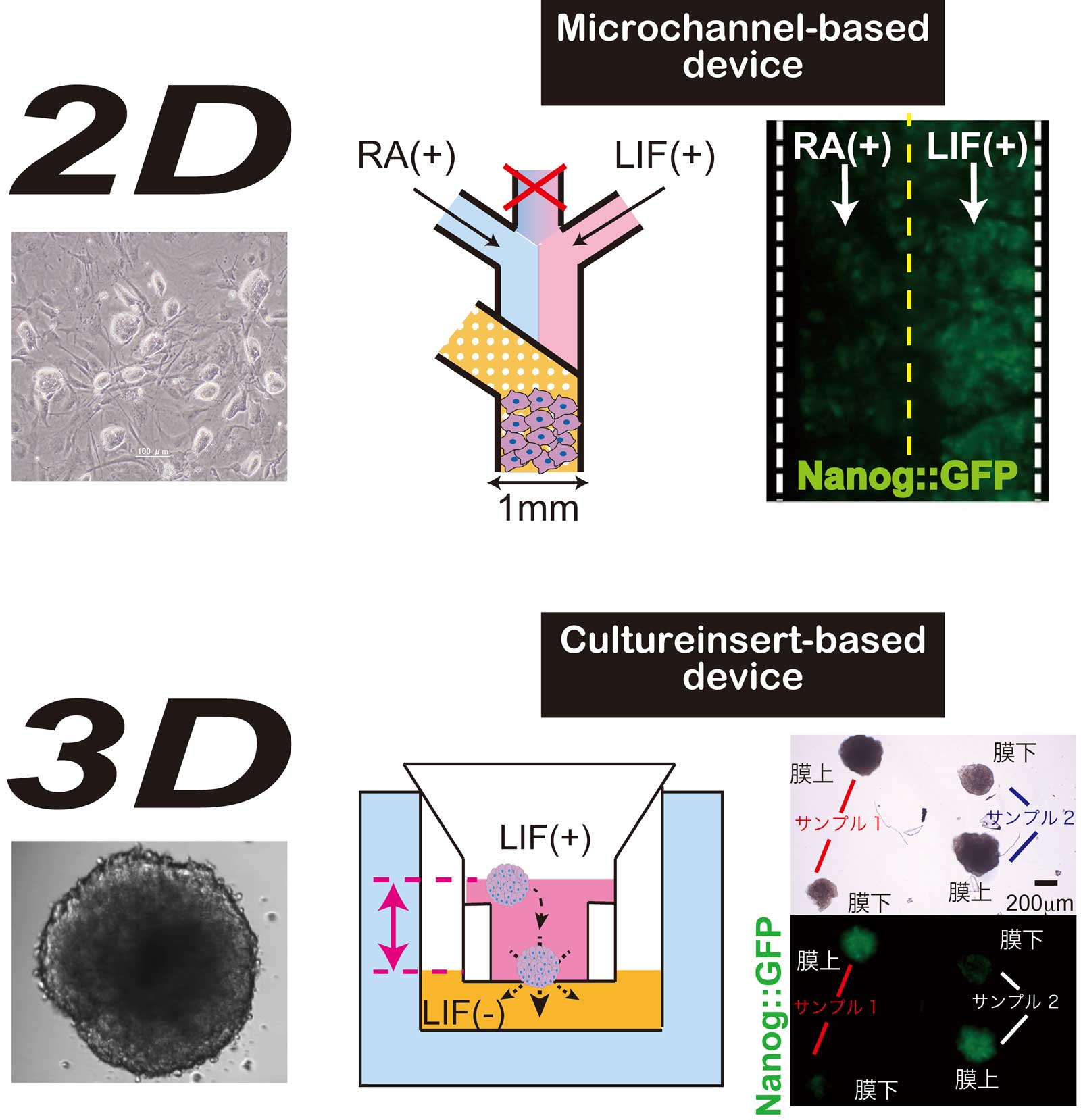Abstract
Pluripotent stem cells (PSCs), for example embryonic stem (ES) cell and induced pluripotent stem (iPS) cell, have the potentials to indefinitely proliferate and to differentiate into derivatives from three germ layers. A technique of controlling culture environment is required to reconstruct complex tissue and analyze differentiation process. Previous researches showed that differentiations into some in vivo-like tissues could be successfully induced, but their differentiation processes were not clear because of limited conventional culture environments. Now, a new culture technique for spatiotemporally controlled culture environment is required.
We have developed microfluidic techniques for exposing PSCs to different differentiation factors spatially in order to spatially control a differentiation induction. There are mainly 2 culture formats, which are attached culture (2D) and embryoid body formation (3D). Then, we successfully achieved the spatial control of inducing undifferentiated and differentiated states in both formats. We are currently trying to reconstruct a higher tissue by spatially inducing various cells derived from different germ layers.
 Devices for a spatially controlled differentiation of pluripotent stem cells in 2D/3D culture formats
Devices for a spatially controlled differentiation of pluripotent stem cells in 2D/3D culture formats
Collaboration
- National Research Institute for Child Health and Development
Sponsor
- JST